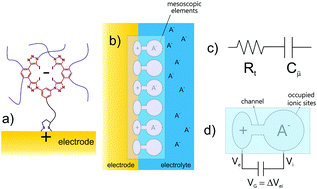The nanoscopic principles of capacitive ion sensing interfaces†
Abstract
Herein we discuss the operational principles of molecular interfaces that specifically recruit ions from an electrolyte solution and report this in a reagentless capacitive manner. At low ionic occupancy the response of the interface obeys a Debye-type phenomenon akin to classic “image charge” effects. At higher levels of occupancy, the response follows Thomas–Fermi screening and, significantly, is dependent on the electronic structure of the mesoscopic ion–receptor host–guest ensemble.

- This article is part of the themed collection: 2020 PCCP HOT Articles


 Please wait while we load your content...
Please wait while we load your content...